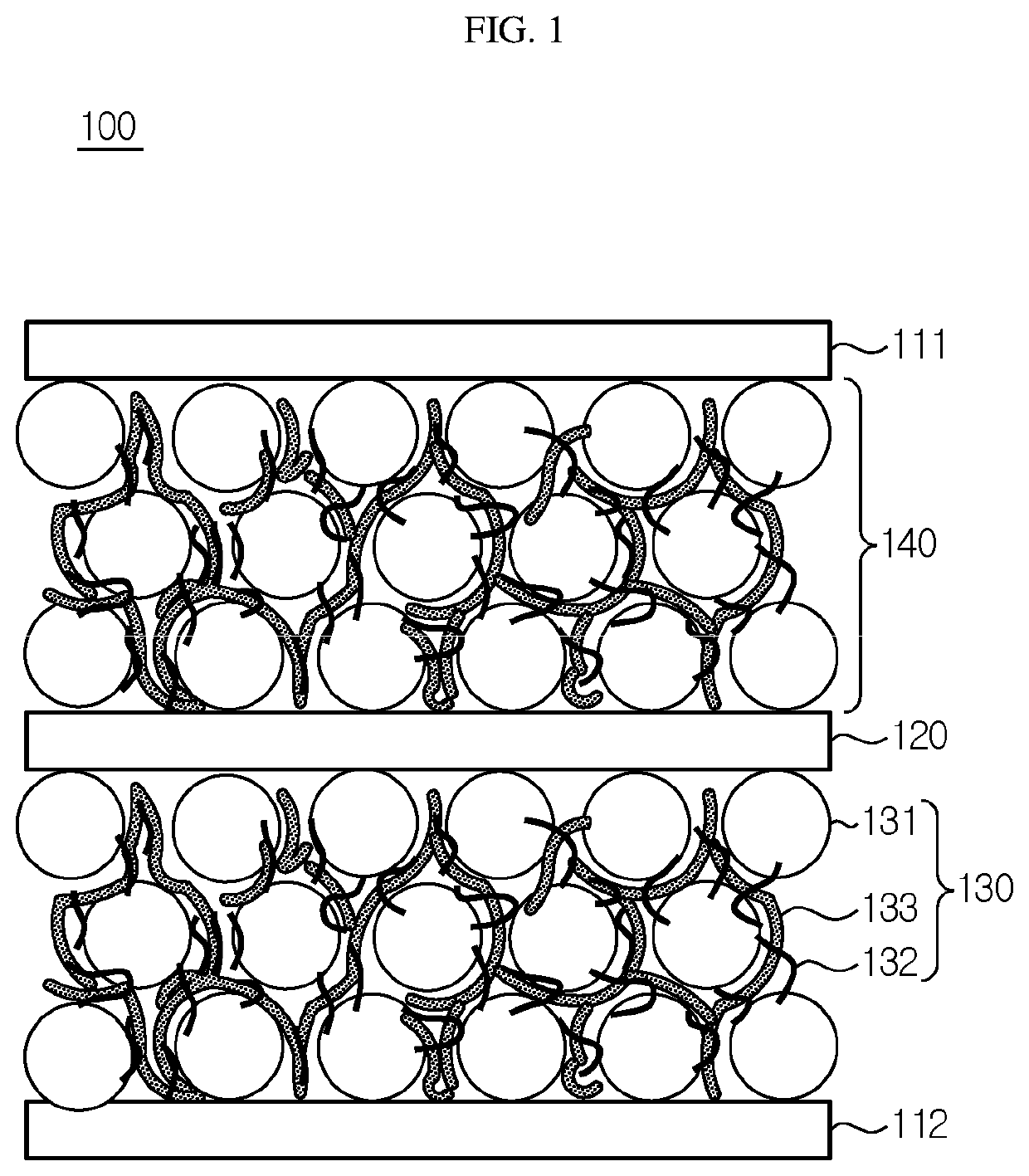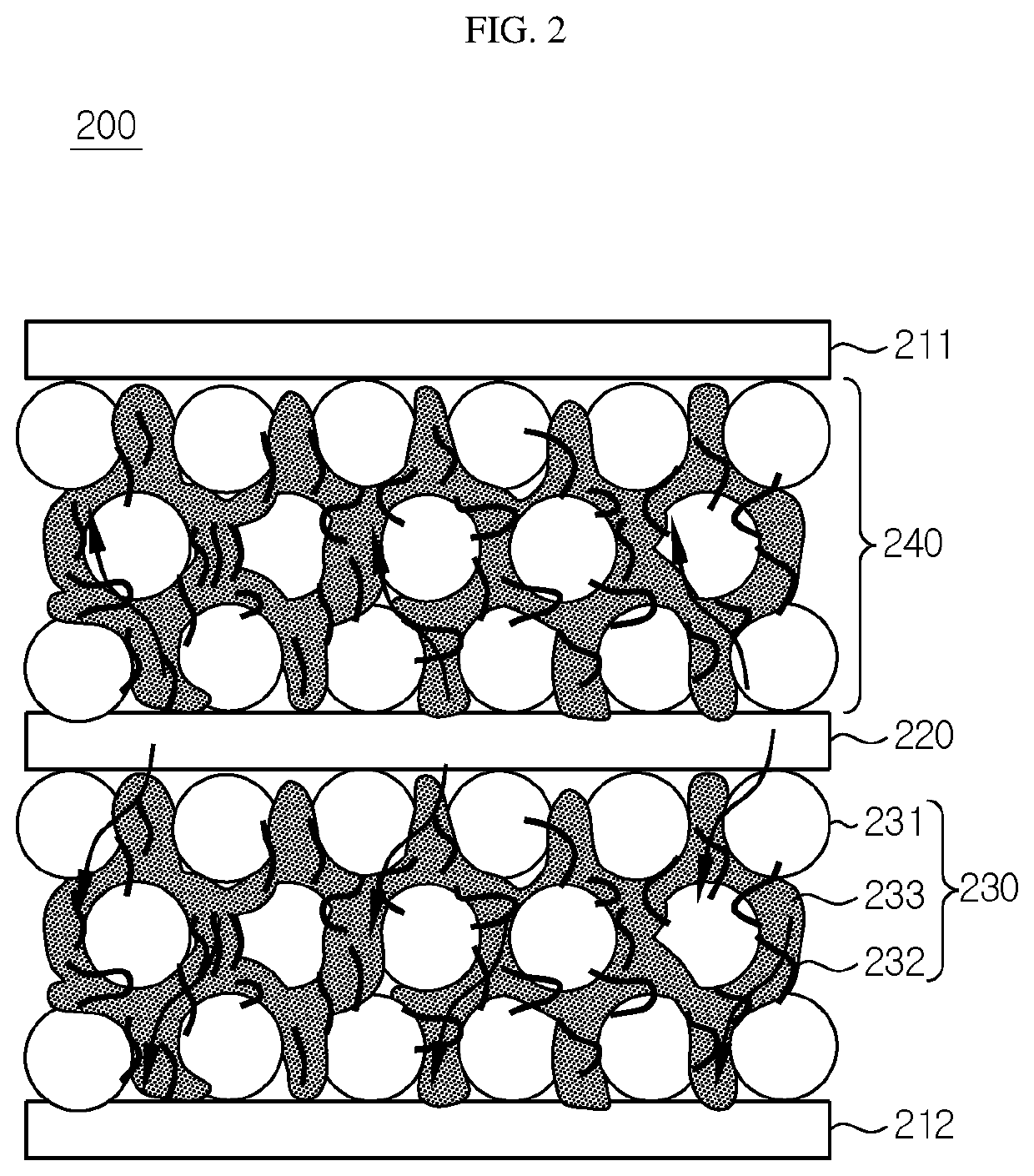Method for Manufacturing All Solid-State Battery Comprising Polymeric Solid Electrolyte and All Solid-State Battery Obtained Thereby
a solid electrolyte and polymer technology, applied in the direction of final product manufacturing, sustainable manufacturing/processing, cell components, etc., can solve the problems of low ion conductivity of lithium secondary batteries using solid electrolyte, overheating or explosion, etc., to increase the reaction site of electrode active materials, reduce resistance, and increase lithium ion transportability
- Summary
- Abstract
- Description
- Claims
- Application Information
AI Technical Summary
Benefits of technology
Problems solved by technology
Method used
Image
Examples
example 1
[0088](1) Manufacture of Electrode
[0089]First, NCM811 (LiNi0.8Co0.1Mn0.1O2) as an electrode active material, vapor grown carbon fibers (VGCF) as a conductive material, and a polymeric solid electrolyte (a mixture of polyethylene oxide (PEO) with LiFSI ((LiCF3SO2)2N), molar ratio of PEO:LiFSI, [EO]:[Li+]=20:1) were mixed at a weight ratio of 80:3:17 and the resultant mixture was introduced to acetonitrile, followed by agitation, to provide electrode slurry. An aluminum current collector having a thickness of 20 μm was prepared. The slurry was applied to the current collector by using a doctor blade and the resultant product was vacuum-dried at 120° C. for 4 hours. Then, compression was carried out by using a roll press device to obtain an electrode having a loading amount of 2 mAh / cm2, an electrode active material layer thickness of 48 μm and a porosity of 22%. The porosity means the ratio of volume of pores (pore volume) occupied by pores based on the total volume. The porosity was ...
example 2
[0094]A battery was obtained in the same manner as Example 1, except that solvent annealing was carried out at room temperature. Before solvent annealing, the electrode active material layer of the electrode assembly had a porosity of 22%. After solvent annealing, the electrode active material layer of the electrode assembly had a porosity of 16%.
example 3
[0095]A battery was obtained in the same manner as Example 1, except that solvent annealing was carried out at room temperature for 2 days. Before solvent annealing, the electrode active material layer of the electrode assembly had a porosity of 22%. After solvent annealing, the electrode active material layer of the electrode assembly had a porosity of 13%.
PUM
| Property | Measurement | Unit |
|---|---|---|
| porosity | aaaaa | aaaaa |
| porosity | aaaaa | aaaaa |
| temperature | aaaaa | aaaaa |
Abstract
Description
Claims
Application Information
 Login to View More
Login to View More - R&D
- Intellectual Property
- Life Sciences
- Materials
- Tech Scout
- Unparalleled Data Quality
- Higher Quality Content
- 60% Fewer Hallucinations
Browse by: Latest US Patents, China's latest patents, Technical Efficacy Thesaurus, Application Domain, Technology Topic, Popular Technical Reports.
© 2025 PatSnap. All rights reserved.Legal|Privacy policy|Modern Slavery Act Transparency Statement|Sitemap|About US| Contact US: help@patsnap.com


